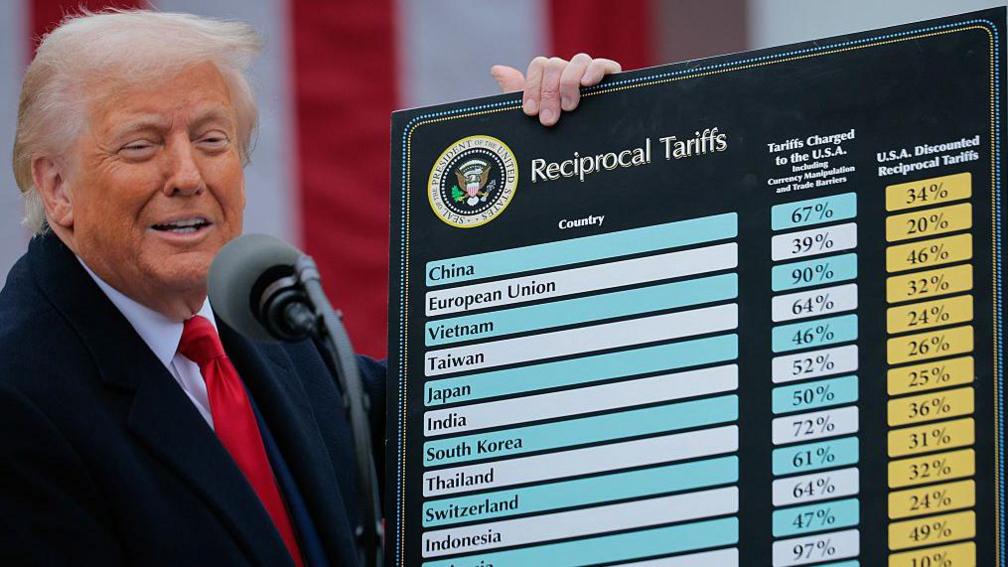
The Consequences of Tariffs on Financial Markets: A Deep Dive into the April 2025 Crash
In April 2025, the financial markets faced a dramatic plunge, largely driven by the tariffs introduced by President Trump as part of his administration's ongoing trade policy. This article aims to explore the circumstances surrounding these tariffs, their immediate effects on the stock market, and the wider implications for the U.S. economy.
Background: Tariff Implementation
At the beginning of April 2025, President Trump unveiled a comprehensive set of tariffs targeting a range of imports, including vital commodities such as steel and aluminum, as well as consumer goods sourced from various nations, particularly China and countries within the European Union. The administration justified these tariffs as a means to safeguard domestic industries from foreign competition and rectify perceived trade imbalances. Nevertheless, the announcement sparked a wave of mixed reactions, with numerous analysts cautioning against the potential adverse consequences for both domestic markets and international trade relations.
Immediate Market Repercussions
In the wake of the tariff announcement, the stock market reacted with considerable volatility and a pronounced downward trend. Major stock indices, including the S&P 500 and the Dow Jones Industrial Average, recorded steep declines, with losses surpassing 5% within a single week. Investor sentiment was primarily driven by concerns over the likelihood of retaliatory actions from affected nations, which could escalate tensions into a full-scale trade conflict. Companies that relied heavily on imported materials or had significant investments in international markets bore the brunt of the market sell-off.
Sector-Specific Consequences
The impact of the tariffs varied considerably across different sectors of the economy. For example, the manufacturing and construction industries, which are heavily dependent on steel and aluminum, saw their stock values plummet as production costs soared due to the newly imposed tariffs. Conversely, some domestic manufacturers in these sectors experienced a temporary boost, as their products became more competitive against foreign imports. However, the prevailing market sentiment remained negative, prompting many investors to adopt a cautious approach amid the uncertainty.
The technology sector also faced significant challenges as a result of the tariff fallout. Many technology firms depend on intricate global supply chains, and the anticipation of rising costs and potential disruptions led to considerable stock sell-offs. Companies with extensive international operations witnessed sharp declines in their stock prices, as investors speculated on the possibility of diminished earnings resulting from increased expenses.
Broader Economic Ramifications
The crash of the stock market was symptomatic of deeper economic anxieties. Economists raised alarms about the potential for inflationary pressures to mount, given that companies might transfer their increased costs onto consumers. Moreover, the unpredictability surrounding trade relations cultivated a climate of hesitancy among businesses, discouraging them from pursuing investments and expansions, which could ultimately decelerate economic growth.
The Federal Reserve found itself in a precarious situation. Faced with the prospect of rising inflation, the central bank grappled with the decision of whether to raise interest rates to counteract inflationary trends or maintain lower rates to foster economic growth. The prevailing market fluctuations and the uncertainty enveloping trade policies further complicated the formulation of monetary policy.
Conclusion
The stock market crash in April 2025 serves as a powerful reminder of the intricate web connecting global trade and domestic economic policies. While the intentions behind the tariffs may have been to fortify American industries, the immediate repercussions led to substantial market instability and prompted critical questions regarding the long-term viability of such trade strategies. As the administration navigates this complex terrain, attention is likely to shift toward achieving a balance between protectionist measures and sustaining healthy trade relationships with international partners. Investors and consumers alike will be closely monitoring the evolution of these policies and their consequential impact on the broader economic landscape.
Add Comment:
Please login or register to add your comment or get notified when a comment is added.
1 person will be notified when a comment is added.
